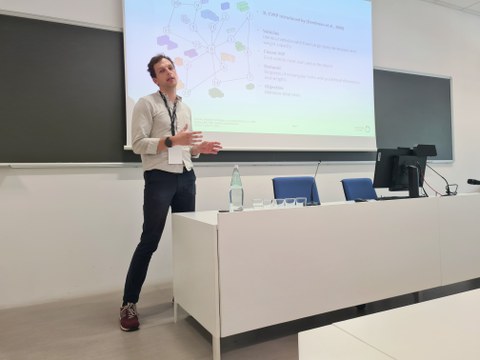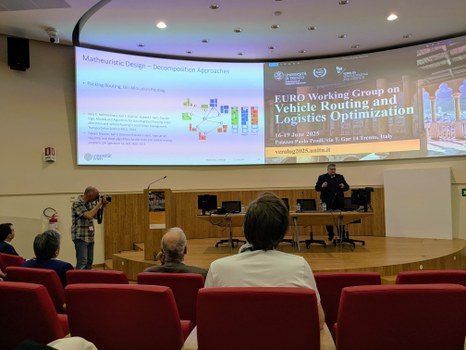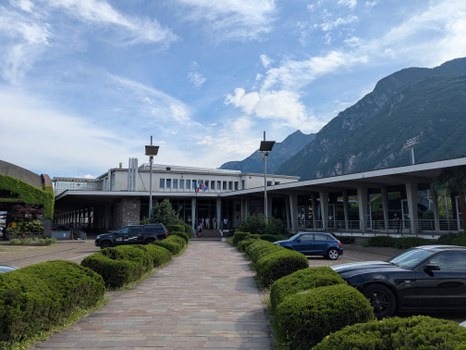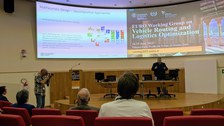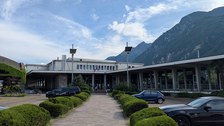Jun 20, 2025
Attending the VeRoLog 2025 in Trento
From June 17 to 19, 2025, the 9th Meeting of the EURO Working Group on Vehicle Routing and Logistics Optimization (VeRoLog 2025) was held at the University of Trento. The event brought together researchers and industry professionals from across Europe and the USA to present and discuss current topics in the field of vehicle routing and logistics optimization.
Our colleague Florian Linß contributed a presentation in the "Rich VRP & industrial applications" stream, showcasing a research project developed in collaboration with Leopold Kuttner and Felix Tamke. The presentation focused on volume utilization strategies for vehicle routing problems involving three-dimensional loading constraints.
Volume utilization strategies in a matheuristic for solving vehicle routing problems with three-dimensional loading constraints
This work addresses the three-dimensional loading capacitated vehicle routing problem (3L-CVRP) with different loading variants. While vehicle routing problems with one-dimensional capacity constraints are already computationally challenging, incorporating three-dimensional loading feasibility adds another layer of complexity. Solution approaches for the 3L-CVRP often evaluate routes with high volume utilization. However, these densely packed loadings frequently violate practical constraints such as stability and LIFO accessibility, making them infeasible. To mitigate this issue and improve computational efficiency, limiting the usable volume heuristically can be beneficial. We develop a matheuristic that integrates these heuristic accelerations into a branch-and-cut algorithm. Our approach determines feasible loadings by combining an extreme point-based packing heuristic with a constraint programming (CP) model. While one-dimensional volume approximations alone are insufficient for guaranteeing feasibility, we explore how they can serve as a filter to constrain capacity effectively, bypassing the expensive calls of the loading heuristic and CP model without significantly compromising solution quality. Specifically, we investigate the effect of restricting volume utilization to a predefined threshold to eliminate the most likely infeasible solutions. Furthermore, we analyze the impact of different 3L-CVRP variants on selecting a suitable volume utilization threshold.

